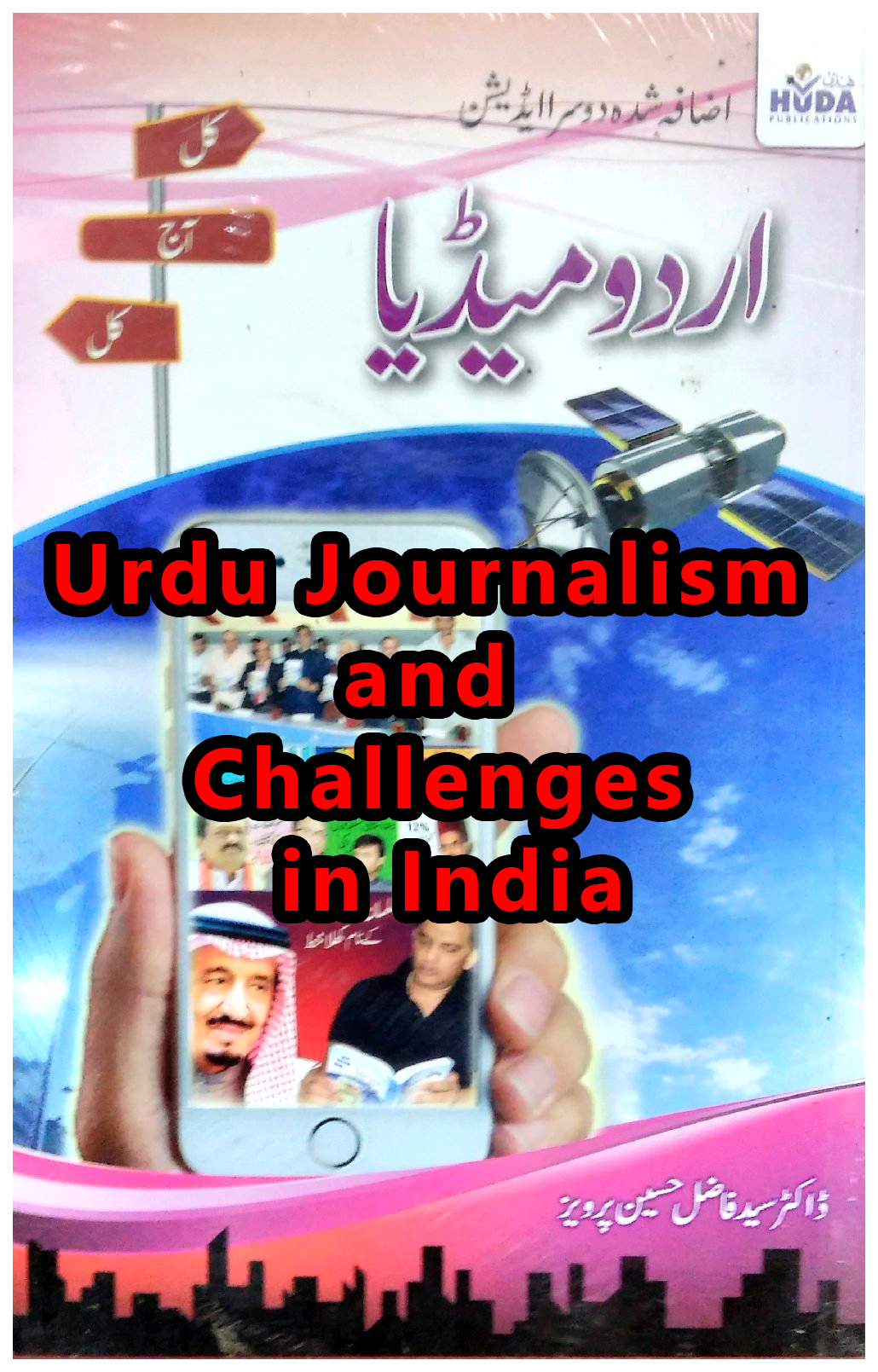`

By Shaikh Ahmed Ali
Urdu journalism in South Asia has a rich history that dates back to the early 19th century. Below, I’ll outline key moments and publications in the development of Urdu journalism from 1822 to the present day.
1. 1822 – The Start: The first Urdu newspaper, “Jam-i-Jahan-Numa,” was started by Harihar Dutt in Calcutta (now Kolkata). This was the beginning of Urdu journalism.
2. 1830s – The Expansion: More Urdu newspapers started appearing, including the Delhi Urdu Akhbar.
3. 1857 – The Sepoy Mutiny: The Mutiny was a significant period in Indian history and Urdu newspapers played a pivotal role in propagating news about the revolt against British rule. Newspapers like ‘Dehli Urdu Akhbar’ were central to this.
4. Late 19th Century – Birth of Prominent Urdu Newspapers: Several newspapers like Avadh Akhbar (Lucknow), Pioneer (Allahabad), Paisa Akhbar (Lahore), and others started gaining popularity.
5. Early 20th Century – The Role in Independence Movement: Urdu journalism played a significant role in the Indian independence movement. Prominent publications like ‘Zamindar’ by Zafar Ali Khan and ‘Inquilab’ participated actively in the freedom struggle. Maulana Abul Kalam Azad’s newspaper, ‘Al-Hilal’, was particularly influential.
6. 1947 – Partition: At the time of partition, Urdu journalism played a key role in providing information and shaping public opinion. The period also marked a shift in Urdu journalism as many Urdu journalists and newspapers migrated to Pakistan.
7. Post-Partition – In Pakistan: In Pakistan, Urdu newspapers like ‘Jang’ and ‘Nawai Waqt’ gained prominence. ‘Jang’ is currently one of the most widely read Urdu newspapers in Pakistan.
8. Post-Independence – In India: In India, Urdu journalism saw a decline due to various factors, including the association of Urdu with Muslims and the division of India. However, newspapers like ‘Inquilab’ and ‘Roznama Rashtriya Sahara’ continued to be published and are still prominent.
9. 21st Century – Digital Revolution: With the advent of the digital age, many Urdu newspapers have also gone online. Websites like ‘Urdupoint’ and ‘BBC Urdu’ are widely visited for Urdu news. There are also numerous online portals for Urdu news and literature.
Please note that this summary doesn’t cover every single event and development in the long history of Urdu journalism. There have been many other Urdu newspapers and journalists who have made significant contributions to the field. The situation of Urdu journalism also varies by country and region.
Urdu journalism’s growth has faced various challenges, both historical and contemporary, particularly in India. It’s important to note that these are complex, multifaceted issues, with no one reason being solely responsible for the current state of Urdu journalism.
1. Partition of India (1947): The division of India and Pakistan greatly impacted Urdu journalism. Many Urdu writers, journalists, and intellectuals migrated to Pakistan, which led to a vacuum in the Urdu journalism field in India. This caused a sharp decline in the number of Urdu publications in India.
2. Language Politics: The politicization of language in post-independence India has also played a role. Urdu was often associated with Muslims and Pakistan, and as a result, it faced suppression and a decline in patronage in many parts of India. The decision to make Hindi the official language of India also had an impact.
3. Education System: The decline of Urdu in Indian schools has had a long-term impact on the audience for Urdu journalism. If fewer people are taught Urdu, fewer people can read Urdu newspapers and magazines.
4. Lack of State Support: Unlike some other languages in India, Urdu has not received significant support from the government, especially in terms of promoting the language in education, administration, or media.
5. Shift in Advertiser Preferences: Advertising revenue is a significant income source for any media. With the decline in Urdu readership, many advertisers shifted their preferences to other languages, creating financial difficulties for Urdu publications.
6. Digital Divide: With the rise of digital media, traditional newspapers in many languages have faced challenges. While many Urdu publications have developed online versions, the digital divide (access to internet and digital literacy) among traditional Urdu readership could potentially have limited the transition to digital consumption.
7. In Pakistan: In Pakistan, Urdu journalism is more widespread, but still faces challenges. Political pressures, censorship, and the influence of English can hinder the growth and freedom of Urdu journalism.
It’s crucial to understand that these challenges are not unique to Urdu journalism and are faced by many minor and regional languages worldwide. Many individuals and organizations are working to revive and promote Urdu journalism by using new technology, offering online content, and advocating for greater use of Urdu in education and public life.
 Gawah (The Witness) – Hyderabad India Fearless By Birth, Pristine by Choice – First National Urdu Weekly From South India – Latest News, Breaking News, Special Stories, Interviews, Islamic, World, India, National News
Gawah (The Witness) – Hyderabad India Fearless By Birth, Pristine by Choice – First National Urdu Weekly From South India – Latest News, Breaking News, Special Stories, Interviews, Islamic, World, India, National News



